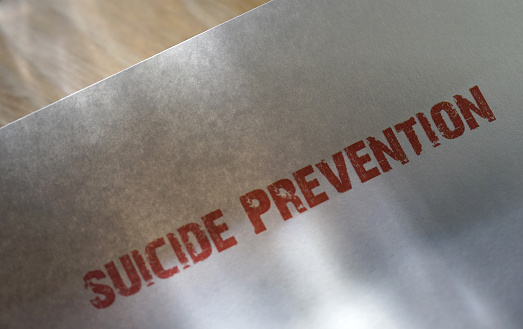Report Shows Changing Suicide Rates Among White & Minority Americans
The findings highlight the complex relationship between race and suicide.
It’s well-known that White Americans (particularly White men) have higher suicide rates than Black and Hispanic Americans, but a new report indicates that this gap may be closing.
The report published by the Centers for Disease Control and Prevention (CDC) looked at the three most commonly used suicide methods: firearms, suffocation (which includes hanging), and poison. Researchers found that after peaking in 2018, suicide rates among non-Hispanic White Americans declined by 2020, from 18.1 suicide deaths per 100,000 people in 2018 to 16.9 per 100,000 in 2020. On the other hand, suicide rates among Hispanic and non-Hispanic Black Americans increased significantly in 2020, to 7.5 per 100,000 and 7.8 per 100,000, respectively.
While the suicide rate among White Americans is still significantly higher — and preliminary 2021 data suggests that this decline may be temporary — it’s still a data point that highlights the complex and shifting relationship between race and suicide.
Why do suicide rates vary by race?
Although racial disparities in suicide rates have been known for some time, the reasons for this relationship are not always clear. What is clear is that no demographic is intrinsically more vulnerable to dying by suicide than any other; rather, differences in suicide rates are most likely caused by differences in societal expectations and cultural and environmental factors. If White men make up a disproportionate percentage of suicide deaths (as they do), then there must be some environmental factor or combination of factors that disproportionately puts them at risk.
A 2017 article in the Yale Global Health Review identified several key suicide risk factors that may explain some of the disparities in suicide rates:
- Social isolation: as became painfully clear during the COVID-19 pandemic, social isolation substantially increases suicidality.
- Housing instability: having a sense of belonging in a place is foundational to good mental health, so people who don’t have a stable residence are at a significant disadvantage.
- Unemployment: long-term unemployment can be devastating to mental health due to loss of structure in the day, financial struggles, and a loss of self-worth.
- Access to firearms: as we’ve written before, firearm access has a dramatic effect on deaths by suicide because guns are much deadlier than other commonly used suicide methods.
The more recent increase in suicide rates among people of color is likewise complicated to explain. An increase in online racism in the wake of the killings of George Floyd and Breonna Taylor in 2020 may be a factor, as we’ve discussed before. And while the COVID-19 pandemic affected everyone, communities of color were disproportionately impacted as well.
Suicide prevention needs to take into account a full range of risk factors.
While more research is certainly needed to understand the cause of disparities in suicide rates, what’s clear is that broad societal factors have a significant impact on suicide risk. There are larger issues that need to be addressed at the local, state, and national levels, including a sense of social connectedness and access to mental health and suicide prevention resources. There is also a need for individual medical and mental health providers to recognize the risk factors and meet standards of care when treating patients at risk of suicide.
Suicide doesn’t discriminate; it affects people and families from all walks of life. If you lost a loved one to suicide and suspect medical negligence may be a factor, we would be honored to evaluate the circumstances and give you our opinion. Contact the Law Offices of Skip Simpson for a free, confidential consultation. We’re based in Texas and serve families nationwide.





